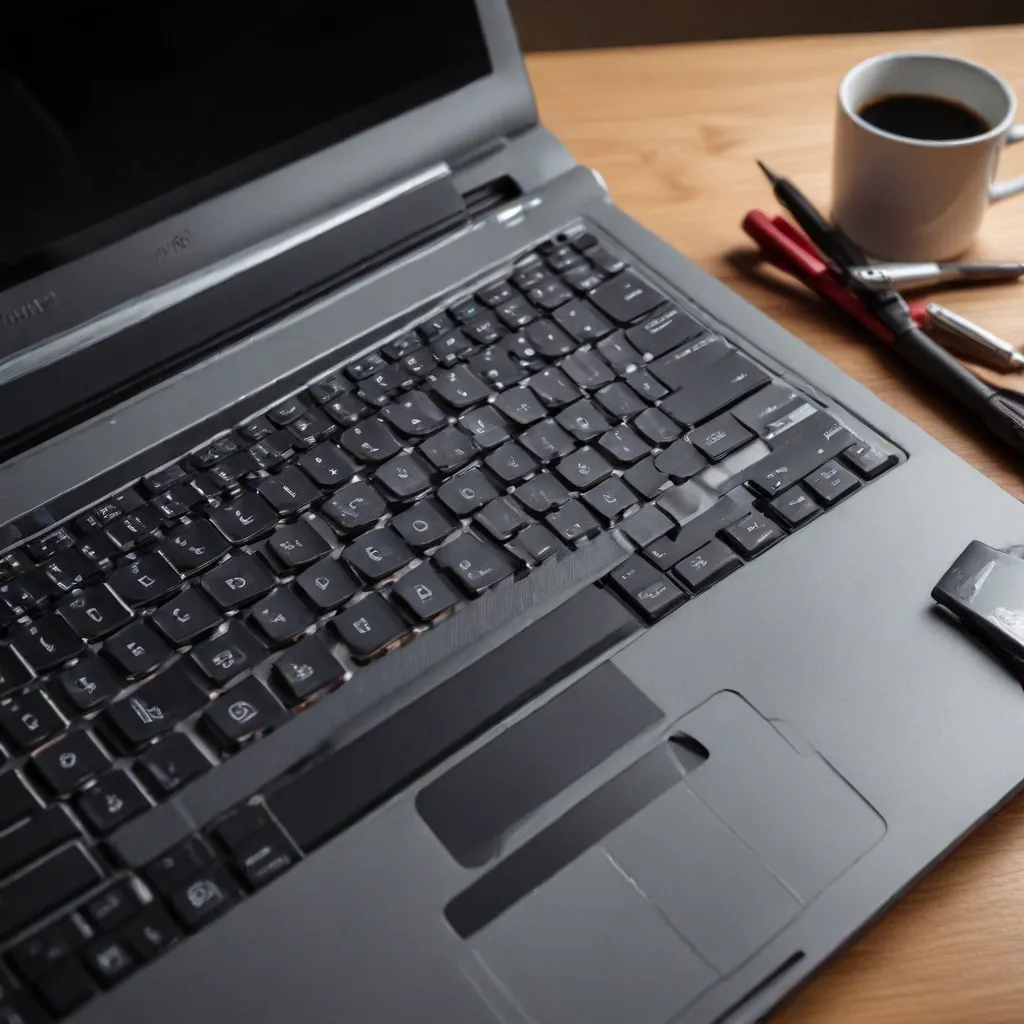
As a seasoned IT professional, I’ve seen firsthand the importance of proper laptop maintenance. A well-cared-for device not only lasts longer but also performs better, enhancing your productivity and overall computing experience. In this comprehensive guide, I’ll share practical tips and in-depth insights to help you keep your laptop in top shape, ensuring it serves you faithfully for years to come.
Regular Cleaning and Upkeep
Maintaining a clean laptop is crucial for its longevity and optimal performance. Start by developing a regular cleaning routine, dedicating time each week to address the various components of your device.
Keyboard and Mouse
Begin with the keyboard and mouse, as these are the most frequently used parts of your laptop. Use a damp, lint-free cloth to wipe down the keyboard, being careful not to let any moisture seep into the crevices. For harder-to-reach areas, such as between the keys, utilize a can of compressed air to gently blow away any accumulated dust and debris.
For the mouse, unplug it, remove the bottom panel, and clean the ball with a lint-free cloth dampened with a small amount of rubbing alcohol. This will help ensure smooth and responsive cursor movement.
Display and Exterior
Next, turn your attention to the laptop’s display and exterior surfaces. Gently wipe the screen with a dry, microfiber cloth, using long, gentle strokes to avoid scratches. For stubborn smudges or fingerprints, you can lightly dampen the cloth with a small amount of water or a specialized screen-cleaning solution.
When cleaning the laptop’s exterior, use a soft, dry cloth to wipe down the surfaces, paying special attention to air vents and other openings to prevent dust buildup.
Thorough Deep Cleaning
Approximately every three to six months, it’s recommended to perform a more thorough deep cleaning of your laptop’s internal components. This involves carefully disassembling the device (following the manufacturer’s instructions) and using a can of compressed air to blow out any accumulated dust and debris from the fans, heatsinks, and other internal components.
Be cautious when disassembling your laptop, as improper handling can damage delicate parts. If you’re not comfortable performing this task yourself, consider enlisting the help of a professional technician to ensure the job is done safely and effectively.
Power and Performance Management
Proper power and performance management can significantly extend the lifespan of your laptop and keep it running at its best.
Rebooting and Shutdown
For newer laptops, it’s generally not necessary to power down the device completely every night. Instead, consider rebooting your laptop once a day to refresh system resources and clear any temporary files or processes that may have accumulated.
However, if you’re using an older laptop, it’s recommended to power down the device properly each night to prevent overheating and other issues.
Disk Defragmentation and Cleanup
One of the easiest ways to improve your laptop’s performance is by regularly defragmenting your hard drive. This process reorganizes the data on your storage device, reducing file access times and improving overall system responsiveness.
Additionally, run a disk cleanup to remove temporary files, cached data, and other unnecessary items that can accumulate over time and consume valuable storage space.
Software Updates and Maintenance
Regularly check for and install software updates, including your operating system, drivers, and any critical security patches. These updates not only improve the functionality of your laptop but also address vulnerabilities that could leave your device exposed to potential threats.
Furthermore, ensure your antivirus software is up-to-date, as this will help protect your laptop from the latest malware and viruses.
Data Protection and Backup
Safeguarding your data is paramount, as a hardware failure or unexpected incident can lead to the loss of valuable information. Implement a robust backup strategy to ensure your files, documents, and other important data are securely stored.
Backup Routines
Establish a regular backup schedule, whether it’s daily, weekly, or monthly, depending on the importance and frequency of your data changes. Consider using a combination of local backups, such as an external hard drive, and cloud-based storage solutions to provide redundancy and accessibility.
Password Management and Security
Strengthen your laptop’s security by regularly updating your passwords. While experts used to recommend changing passwords monthly, the current best practice is to update them every three to four months. This helps mitigate the risk of unauthorized access without overburdening you with frequent password changes.
Additionally, ensure that your laptop’s firmware and BIOS are up-to-date, as these updates can address security vulnerabilities and improve overall system stability.
Ergonomics and Handling
Proper ergonomics and handling techniques can significantly extend the lifespan of your laptop and prevent potential damage.
Laptop Placement and Airflow
When setting up your laptop, choose a location with good airflow, allowing at least two inches of space on each side of the device. This helps prevent overheating and ensures optimal cooling performance. Avoid placing items, such as books or papers, directly on top of the laptop, as this can restrict airflow and lead to overheating.
Protective Accessories and Handling
Invest in a high-quality protective case or sleeve to safeguard your laptop when transporting it. Additionally, be mindful of how you handle the device, opening it from the center rather than the corners to prevent cracks or damage to the display.
Conclusion
By following this comprehensive laptop maintenance checklist, you’ll be well on your way to keeping your device in top shape for years to come. Regular cleaning, power management, data protection, and proper handling are all crucial elements in ensuring your laptop’s longevity and optimal performance.
Remember, a well-maintained laptop is not only a joy to use but also a smart investment. By following these best practices, you’ll be able to maximize the lifespan of your device and enjoy a seamless, productive computing experience. For more IT solutions and tech insights, be sure to visit IT Fix.












